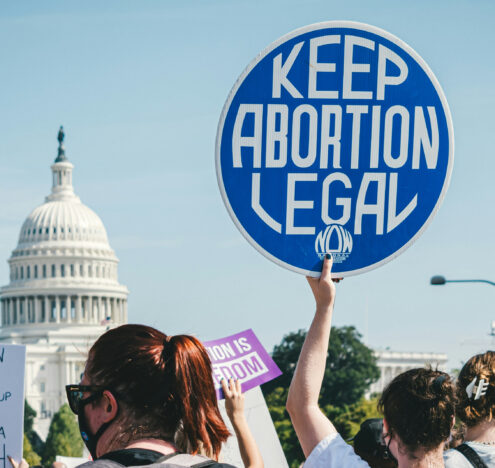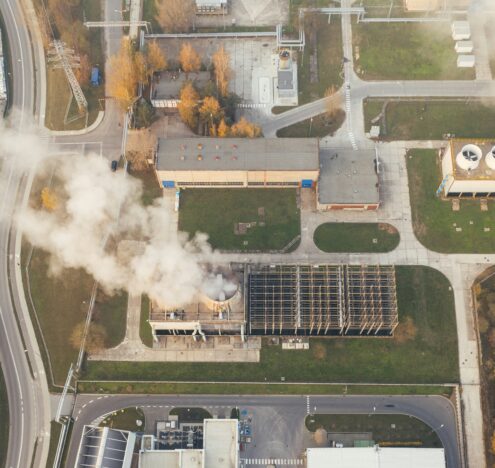When I tell my friends I’m going to New York for two weeks to write about a meeting at the United Nations, they think it’s pretty cool. But when I tell them about the nuclear weapons treaty that diplomats are meeting to discuss, they’re less impressed. Most of them have never heard of the Nuclear Nonproliferation Treaty (NPT) and don’t see why they should care.
The 1968 NPT certainly isn’t a one-stop solution to all the nuclear threats we face. But it has played a key role in reducing nuclear tensions and limiting the spread of nuclear weapons over the past fifty years. We can’t afford to take it for granted.
The NPT bans all but five countries from possessing nuclear weapons. Today, 190 countries have joined the treaty and an international team of inspectors ensures that national nuclear energy and research programs aren’t used for developing nuclear arsenals. It also commits nuclear-weapon states to take steps to end the arms race and eventually achieve nuclear disarmament.
My friends are quick to point out where the treaty comes up short: it hasn’t stopped North Korea from developing nuclear weapons nor has it stopped Israel, India, and Pakistan from getting the bomb. A treaty that allows some countries to have nuclear weapons but not others is unfair at its core. And how, they ask, can this treaty stop an impetuous US president from unleashing fire and fury and killing us all?
My friends are quick to point out where the treaty comes up short: it hasn’t stopped North Korea from developing nuclear weapons nor has it stopped Israel, India, and Pakistan from getting the bomb.
In short, they’re skeptical that this Cold War-era treaty can deal with the many nuclear challenges we see today. US-Russian relations are at their worst point since the Cold War, making negotiating additional arms reductions in their massive nuclear arsenals more challenging. All of the nuclear-armed countries are investing heavily in more advanced nuclear systems. The risk that a military-to-military incident between nuclear-armed rivals could spark a nuclear exchange is increasing. Several states, including the United States, are adopting strategies that expand the range of scenarios in which nuclear weapons might be used.
NPT meetings have been trying to address these concerns for decades, with very little success in recent years. I’ve been writing about the treaty for three years and I’ve struggled to coin new ways to write about the same disagreements on the same issues.
While it’s easy to be frustrated by what the NPT has not accomplished over the past fifty years, it’s essential that we don’t overlook its contributions — and that we continue to press for better results.
Before the NPT was negotiated, US President John F. Kennedy predicted that by 1970, 25 countries could possess nuclear weapons. In 2019, only four additional countries have developed nuclear weapons.
A number of bilateral and multilateral nuclear treaties have built on the NPT’s principles to reduce nuclear dangers since it was signed. The United States and Russia have signed a series of arms reduction treaties to reduce their bloated nuclear arsenals. Through the commitments made in the NPT, the international community increased pressure on the nuclear-armed states to halt nuclear testing and conclude a global treaty banning all nuclear tests in 1996. The treaty has reinforced the taboo against the spread of nuclear weapons-usable material and the technology to build the bomb. Most recently, 122 states voted in favor of the Treaty on the Prohibition of Nuclear Weapons in July 2017, which will ban the production, use, testing and stockpiling of nuclear weapons for all states-parties, as well as require states-parties to provide assistance for people and land impacted by nuclear weapon use, once it officially comes into effect. The negotiating states see this treaty as an effective implementation of the NPT’s call for disarmament.
Thanks to the NPT, regardless of hostility among nuclear-weapon states, there is a near-annual convening of countries to discuss nuclear risks and at least rhetorically emphasize the need to reduce them. On the sidelines of NPT meetings, governmental and non-governmental experts share ideas about how to verify nuclear disarmament and take forward a legal zone prohibiting weapons of mass destruction in the Middle East.
The NPT’s Article VI is the only legally binding instrument committing five nuclear-weapon states to eventually give up their weapons. NPT meetings provide a forum for non-nuclear-weapon states to maintain political pressure on the nuclear-weapon states to continue negotiating steps toward global nuclear zero. Through final documents at the NPT Review Conference held once every five years, countries can agree to practical steps to advance disarmament and nonproliferation, as they did in 2010.
But there’s a real risk of losing the positive contributions of the treaty if countries continue to fail to advance its objectives. To preserve the NPT for the next fifty years, countries need to follow through on past promises.
A good place to start would be encouraging the countries with the two largest nuclear weapons arsenals – the United States and Russia — to get back to the negotiating table to pursue deeper nuclear reductions. At the very least, they should agree to extend for five years the 2010 New Strategic Arms Reduction Treaty, which caps each country’s deployed strategic nuclear warheads at 1,550, deployed strategic missiles, submarines and aircraft at 700 and non-deployed strategic missiles, submarines and aircraft at 800. New START will expire in February 2021 unless US President Donald Trump and Russian President Vladimir Putin agree to extend it. The United States and Russia should also resume high-level talks to avoid the kinds of miscalculations and misunderstandings that can lead to a nuclear conflict.
Without sustained efforts to advance its core disarmament and nonproliferation goals, there is no guarantee that the NPT will continue to provide the same benefits for international peace and security that it has granted for the past fifty years. Public attentiveness to these meetings can help put pressure on countries to take action on the treaty’s objectives.
When I’m in New York, I’ll be blogging and tweeting about the NPT meetings. I hope even my most skeptical friends will spare a few minutes to follow along, and ask their elected leaders and the 2020 presidential candidates what exactly they will do to reduce the risk of nuclear proliferation and nuclear war. I know that a meeting of diplomats talking about an old nuclear weapons treaty in a conference room at the UN isn’t sexy. But if ordinary citizens don’t pay attention and hold nuclear weapons actors accountable, the risk of nuclear catastrophe will only continue to grow.
Alicia Sanders-Zakre is a research assistant at the Arms Control Association, where she focuses on the Nuclear Nonproliferation Treaty, nuclear nonproliferation and chemical weapons.





















